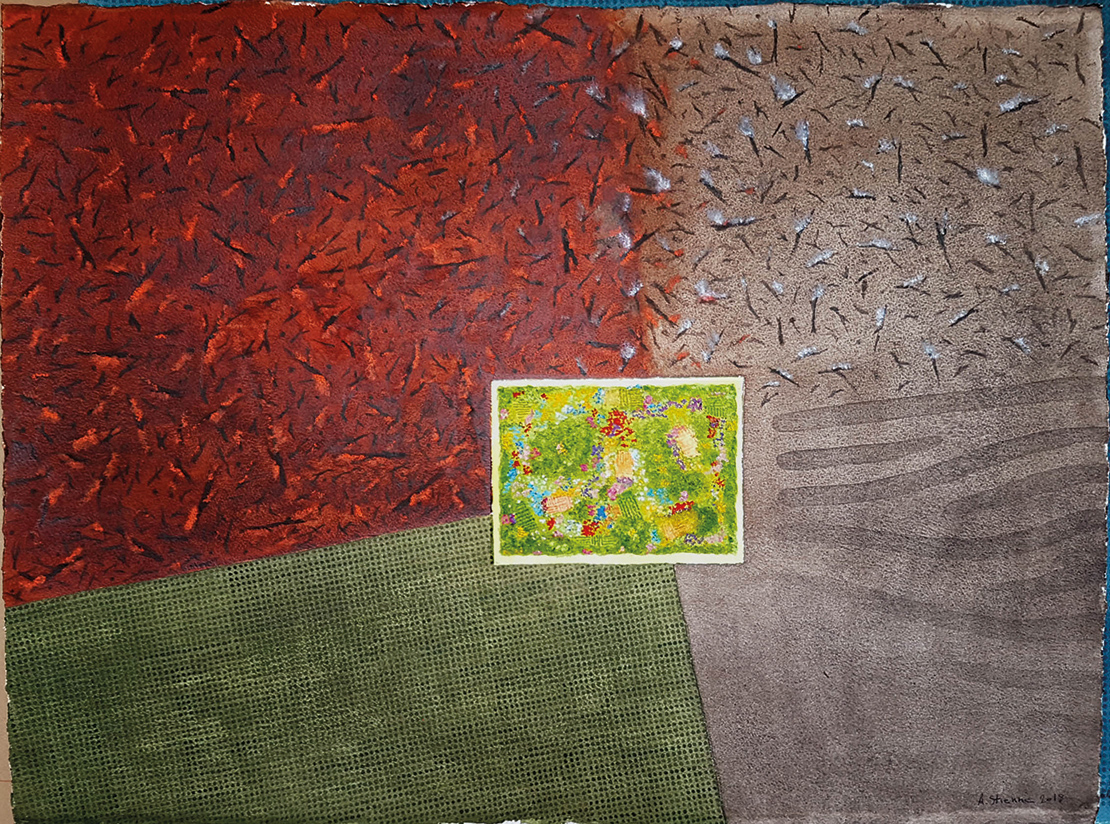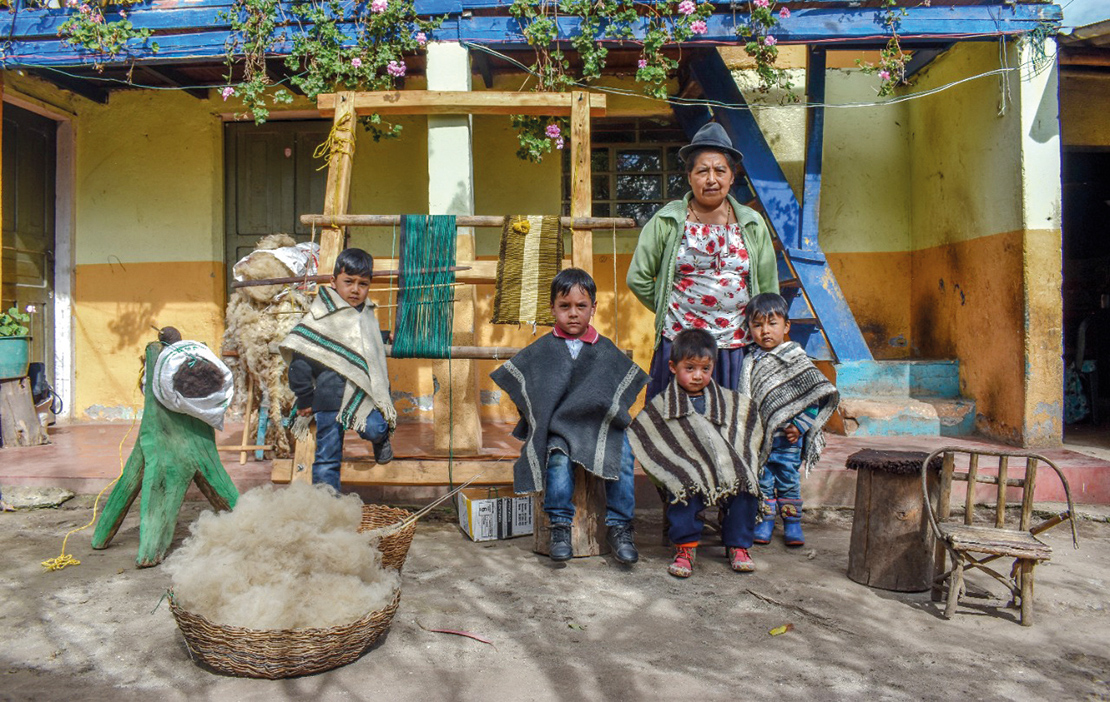Economic transitions towards sustainable use and diverse local economies
Vision
Diverse and human-scale economic systems are thriving, within which IPLC customary sustainable use and other small-scale producers are contributing to sustainable and resilient economies. Scaled-down consumption patterns are guaranteeing a sustainable and just society.
Rationale
Biodiversity loss, climate breakdown and intensifying social inequalities are the consequences of an economic system that seeks infinite growth, yet depends on finite resources. The present global ecological footprint has surpassed the carrying capacity of the Earth, to the point where we need 1.75 planets to support current production and consumption patterns.1 Recent research also highlights that current large-scale agricultural and food production systems, and the continued loss of habitats, are increasing the risk of virus pandemics such as COVID-19.2 Where short-term profit is the primary factor in decision-making, environmental destruction is seen as an acceptable externality to the core business of large economic sectors. Accordingly, the customary resource management and sustainable use practices of IPLCs, peasants and small-scale producers are considered unproductive, despite feeding 70 per cent of the world’s people and providing multiple benefits to society, using less natural resources.
A radical transformation is needed in current carbon-intensive economic systems and in global systems of production and consumption, towards a plurality of systems embodying local sustainable use, practices and technologies. There is no single blueprint for transforming current unsustainable practices, but many diverse solutions, innovations, technologies and alternatives are emerging. Among these, with appropriate recognition and support, IPLC systems of customary sustainable use, small-scale production, and innovative social enterprises by IPLC youth and women, offer multiple benefits at all levels for biodiversity, for climate change mitigation and adaptation, and for sustainable development.
“Goals for conserving and sustainably using nature and achieving sustainability cannot be met by current trajectories and goals for 2030 and beyond may only be achieved through transformative changes across economic, social, political and technological factors.”
— Extract from the IPBES Global Assessment3

The geography of palm oil: a field is surrounded by land deforested by fire, plantations and industrial farming. Credit: Stienne, Dépaysages de palmiers à huile, Visionscarto.net.
“Why do you do this? You say it is for development – but what kind of development takes away the richness of the forest and replaces it with just one kind of plant or one kind of animal? Where the spirits once gave us everything we needed for a happy life – all of our food, our houses, our medicines – now there is only soya or cattle. Who is this development for?”
Raoni Metuktire, environmentalist and Chief of the indigenous Brazilian Kayapó people4
Benefits of the transition
Transforming the global economic paradigm and model would significantly contribute towards achieving sustainability and a healthy society. The main benefits would include:
- Living within the carrying capacity of the Earth, thereby reducing negative impacts on biodiversity and the climate;
- Having a more equal and just society, providing fair access to resources and equal opportunities for sustainable development;
- Enjoying human wellbeing more, including fulfilment of human material needs, mental needs and spiritual needs;
- Having greater respect for diverse ways to produce and consume, thereby increasing ecological and social resilience and cultural diversity;
- Securing a better chance to achieve the UN Sustainable Development Goals by 2030, as a critical milestone to achieving the vision of living in harmony with nature by 2050.
Diversity in economies increases sustainability and resilience. All social actors have a role to play. Among them, IPLC customary sustainable use and small-scale production systems provide multiple benefits for biodiversity, for climate change mitigation and adaptation, and for sustainable development at all levels:
- They are generally diverse mosaics of ecosystems, providing ecological niches for genes, species and ecosystems, and storing large amounts of carbon.
- They support varied sustainable livelihoods and sustainable socio-ecological production landscapes and seascapes from which other productions systems can learn.
- They keep alive and renew cultural and spiritual values and ways of life that focus on ‘living well’ rather than unchecked and wasteful consumption, thereby also contributing to diverse ways of knowing and being.
With appropriate recognition and support, these systems could amplify the benefits to environment and society.
Progress towards the transition and guiding examples
There has been increasing discussion in various global forums (e.g. the fourth session of the UN Environment Assembly, and the World Economic Forum) about the need to transform the current economic system and its production and consumption patterns. Efforts have been made by the UN Food and Agricultural Organization (FAO) and the European Union to promote agroecology. Several initiatives to explore the ‘green economy’ are being undertaken by governments and innovative enterprises, but no significant concrete progress is visible, partly due to the failure to address unsustainable consumption patterns. Also, governments have not done enough to regulate damaging industries and to support customary sustainable use and small-scale producers.
Local initiatives do exist and are evolving, but they will need much more recognition and support to make a difference at national and global scales. Several examples are illustrated in Part 2 of this report and many more exist in other sources, including:
- Traditional and local systems that are vital for sustainable production and consumption;
- Youth-led innovations in local small-scale production systems, generating new products and new markets through social enterprises;
- Defence of IPLC territories and lands against incursions and land-grabbing;
- Global networks and initiatives, such as the ‘International Partnership for the Satoyama Initiative’, the ‘Forest and Farm Facility’, and the UN Decade on Family Farming which support sustainable small-scale producers and the revitalisation or strengthening of customary sustainable use practices;
- ‘Transition towns’, with their locally grown food, community-owned power stations, and local currencies, transitioning towards self-sufficient and resilient communities and economies;5
- Eco-villages, focused on living well while regenerating rather than depleting the environment, and on co-operation and connections.6
Box 59: Edith Bastidas, Indigenous Women’s Biodiversity Network and the Center for the Promotion and Indigenous and Social Development YANAPANAKUY, Colombia
Revitalising a wool fabric based on indigenous knowledge. Credit: Jorge Daniel Lucero.

Case study: The Network of Weavers of the Indigenous Reserve of Ipiales, Colombia
The Indigenous Reserve of Ipiales is located in the Department of Nariño in the southwest of Colombia. Its population is approximately 25,000 people belonging to the village of Los Pastos.
In March 2019, a project to support the recovery and revitalisation of a local wool fabric based on indigenous knowledge began, through an alliance between the Ministry of Health, Women and Gender of the Reserve, the Indigenous Women’s Biodiversity Network, and the Center for the Promotion and Indigenous and Social Development YANAPANAKUY. The initiative addresses other areas such as the path for recognition of the territory; environmental conservation; the recovery of seeds and especially of medicinal plants; the recovery of their own food; and knowledge about food preparation. This holistic approach gave life to the Network of (Women) Weavers of the Indigenous Guard of Ipiales, of which men, boys, girls and young people are also part.
— Read the full case study
There is no single blueprint for transforming the current unsustainable development model. But there is an increasing emergence and visibility of a myriad of diverse solutions, innovations and alternatives, including IPLC customary sustainable use, small-scale producers and civil society initiatives, both in rural and urban landscapes and seascapes. These include solidarity and social economies, and initiatives for commons-based provisioning of food, shelter, energy and technology.7
The Global Tapestry of Alternatives is an interesting emerging initiative, which seeks to create solidarity networks and strategic alliances among systemic and sustainable alternatives at local, regional and global levels. These range from initiatives with a specific focus—such as, sustainable and holistic agriculture; community-led water/energy/food sovereignty; solidarity and sharing economies; worker control of production facilities; resource/knowledge commons; ecological conservation; and inter-ethnic peace and harmony—to more holistic or rounded transformations where communities are achieving self-governance, autonomy, and self-reliance while challenging structures and relations of oppression, hierarchy and domination.8
Key components of the transition
- Having national and sub-national policy and processes that transform production and consumption systems and support: economic decentralisation, diversification and innovation; niche social enterprises and co-operatives; and locally accountable and sustainable systems.
- Shifting from fossil fuel-based economies to clean energy.
- Recognising and supporting the roles of IPLC customary sustainable use in national and sub-national policy and legislation, including traditional occupations and customary institutions, and their importance to conservation and sustainable development through, for example, being fully reflected in national biodiversity strategies and action plans and national development plans.
- Partnering to advance development and implementation of the CBD Plan of Action on Customary Sustainable Use, including acknowledging and supporting small-scale producers and agroecology as major contributors to the objectives of the CBD.
- Transitioning all businesses towards sustainable practices, including along their supply chains, through robust and accountable government regulation and voluntary processes, demonstrating improved outcomes on biodiversity and for IPLCs.
- Recognising and supporting women and youth, who are key actors in revitalising and innovating rural and local sustainable economies.
- Reducing consumerism and wasteful consumption in order to reduce the current unsustainable global ecological footprint and to live within the Earth’s carrying capacity.
- Promoting and implementing principles of circular economy that entail gradually decoupling economic activity from the use of finite resources, reusing waste in closed production loops, and regenerating natural systems.
References
- See: Global Footprint Network. Available at: https://www.footprintnetwork.org
- Pabst, Y. (2020) Coronavirus: “Agribusiness would risk millions of deaths.” Interview with Rob Wallace. Marx21. Available at: https://www.marx21.de/coronavirus-agribusiness-would-risk-millions-of-deaths/
- IPBES (2019) Summary for policymakers of the global assessment on biodiversity and ecosystem services of the Intergovernmental Science-Policy Platform on Biodiversity and Ecosystem Services. S. Díaz, J. Settele, E. S. Brondízio E.S., H. T. Ngo, M. Guèze, J. Agard, A. Arneth, P. Balvanera, K. A. Brauman, S. H. M. Butchart, K. M. A. Chan, L. A. Garibaldi, K. Ichii, J. Liu, S. M. Subramanian, G. F. Midgley, P. Miloslavich, Z. Molnár, D. Obura, A. Pfaff, S. Polasky, A. Purvis, J. Razzaque, B. Reyers, R. Roy Chowdhury, Y. J. Shin, I. J. Visseren-Hamakers, K. J. Willis, and C. N. Zayas (eds.). Bonn, Germany: IPBES. Available at: https://doi.org/10.5281/zenodo.3553579
- Metuktire, R. (2019) ‘We, the peoples of the Amazon, are full of fear. Soon you will be too’. The Guardian. London: Guardian Media Group. Available at: https://www.theguardian.com/commentisfree/2019/sep/02/amazon-destruction-earth-brazilian-kayapo-people
- Transition Network (n.d.) Transition Network. Totnes: Transition Network. Available at: https://transitionnetwork.org
—
Flintoff, J-P. (2013) ‘Local, self-sufficient, optimistic: are Transition Towns the way forward?’ The Guardian. London: Guardian Media Group. Available at: https://www.theguardian.com/environment/2013/jun/15/transition-towns-way-forward - Global Ecovillage Network (n.d.) Global Ecovillage Network. Findhorn: Global Ecovillage Network. Available at: https://ecovillage.org
- Bollier, D. and Helfrich, S. (2019) Free, fair, and alive: The insurgent power of the commons. Gabriola Island, Canada: New Society Publishers.
—
See also: Commons Transition. Available at: https://commonstransition.org - Global Tapestry of Alternatives (n.d.) Global Tapestry of Alternatives. Global Tapestry of Alternatives. Available at: https://globaltapestryofalternatives.org


